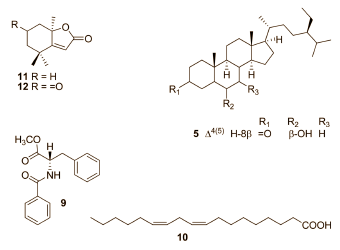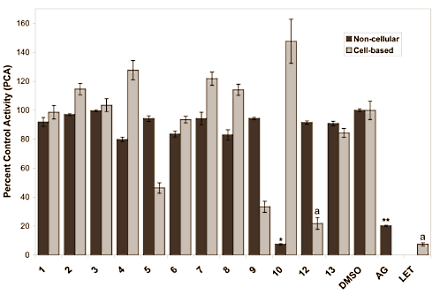|
Definition: "An ergogenic aid is any substance or phenomenon that enhances performance "
|
|
||||||||
27.03.2011 |
|
|
Strong natural anti-oestrogens in Brassaiopsis glomerulata
The manufacturer got 7 human guinea-pigs to use Triazole. According to the advertising claims the subjects' free testosterone levels went up by 146 percent and their estradiol level dropped by 45 percent.
Brassaiopsis glomerulata is a shrub found in the Far East, which local healers use to cure all sorts of complaints – from rheumatism to back pain to constipation. Healers in China use the plant to stimulate urine production.
Because little was known about the components of Brassaiopsis glomerulata, American cancer researchers subjected it to examination. They are searching for naturally occurring compounds that inhibit the conversion of androstenedione and testosterone into estradiol. Pharmacologists may be able to use compounds like this for new medicines against hormone-sensitive forms of cancer.
The researchers discovered that extracts of the leaves of Brassaiopsis glomerulata have an anti-oestrogenic effect. They isolated the ingredients in the extract and determined the anti-oestrogenic effect of each one. The researchers looked at whether the compounds were capable of inhibiting the aromatase enzyme that converts androstenedione into female hormones in test tubes [non-cellular], and whether they inhibited the conversion in live human cells [cellular].
The researchers tested the plant ingredients in a concentration of 20 micrograms per millilitre. They compared their anti-oestrogenic effect with that of cytadren [AG] [50 micrograms] and letrozole [20 nanomols].
The compounds that inhibit aromatisation in living cells are most interesting. That's why component 10 – ordinary linoleic acid – isn't so interesting, whereas components 5, 9 and 12 are worth looking at.
Component 5 is a triterpene; component 9 is N-benzoyl-L-phenylalanine methyl ester, which has never been found in a plant before. But the best performing component is number 12: (-) – dehydrololiolide. This compound works as well as letrozole.
Compound 12 is not new. It's also found in grapes, a fact known since 1989. [Austr. J. Chem., 1989, 42, 2071.] Extracts of grape seeds have shown, in test tube studies at least, a strong anti-oestrogenic effect.
Source:
More:
|
|



